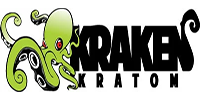Experts Reveal 15 Inventory Management Best Practices for Retailers

Proper inventory management is crucial to your growth and success
Though it’s not the sexiest retail topic, inventory management is crucial for retail businesses. It can make or break your bottom line. Yet 43% of small businesses either don’t track inventory at all or use an antiquated manual method.
Without effective inventory management techniques in place, you make your business more susceptible to costly stockouts and related issues. Consumers experience out-of-stocks 1 in 3 shopping trips, according to one IHL Group report. The problem cost businesses $984 billion worldwide in just one year.
We polled retail industry experts to find out their best practices when it comes to inventory management for retailers. Check out what they had to say:
Understand the relationship between sales and inventory
“Don’t just focus on top sellers when you’re figuring out your inventory buy and replenishment strategy. It’s important to consider the relationship between sales percent penetration AND inventory percent penetration so that you don’t miss opportunities to do more business.
For example, if you pull your sales results and see that cocktail dresses are 20% of your sales, and jumpsuits have only generated 4%, the instant reaction is to buy more cocktail dresses (not jumpsuits).
However, if you simultaneously look at your inventory results, you may see that while cocktail dresses generated 20% of sales, they represented 40% of your inventory, while jumpsuits generated 4% of sales but on 1% of your inventory.
Your initial instinct to buy more cocktail dresses and hold back on jumpsuits gets turned on its head. By considering the relationship of sales to inventory, you can see that you’re actually over-inventoried in cocktail dresses, and may be missing opportunities to sell more jumpsuits because you don’t have enough of them on the floor.
To Read The Rest Of This Article On VendHQ, Click Here






























